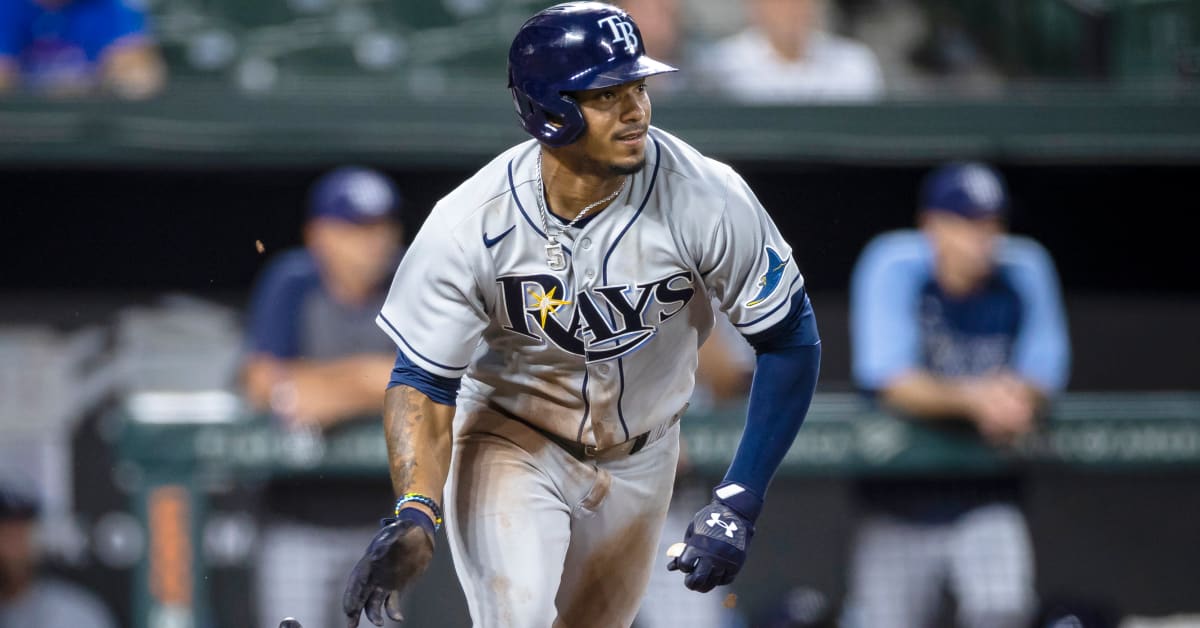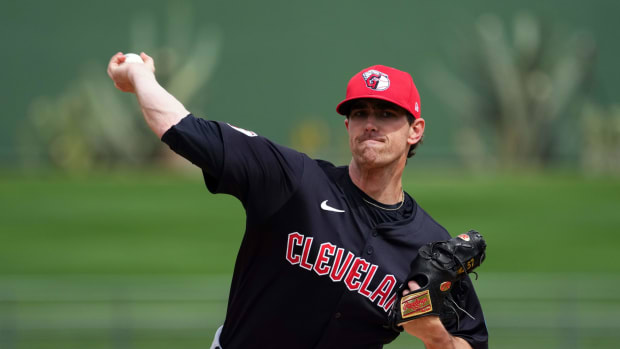
The Sure Thing: Why the Rays Extended Baseball's Next Phenom
Baseball history is riddled with cautionary tales of would-be Hall of Fame hitting careers that never were. Whether because of drugs (Josh Hamilton, Darryl Strawberry), injury (Grady Sizemore, Don Mattingly) or a lack of sustained excellence (César Cedeño, Dale Murphy), you can find the story of your liking if you want to believe the Rays are taking a huge gamble handing $183 million over the next 11 years to infielder Wander Franco.
But the Rays are taking a very low risk because of this historical fact: Hitters who excel in the majors at a very young age go on to have great careers at a very high rate. It’s stretching the point to call the contract a bargain, but Tampa Bay is a smart organization that is doling out this contract only because it knows the risk is so low.
Franco turns 21 on March 21. Last season he became the 115th player to play at least 70 games before his 21st birthday. That’s a rare enough achievement.
Now consider among that group only the ones who posted an OPS greater than .800. That group of phenoms is an exclusive club of just 22, including Franco (.810). Here is how that group of 22 under 21 breaks down.
Active (10): Ronald Acuña Jr., Miguel Cabrera, Carlos Correa, Franco, Bryce Harper, Jason Heyward, Juan Soto, Giancarlo Stanton, Fernando Tatis Jr., Mike Trout.
Hall of Famers (9): Orlando Cepeda, Jimmie Foxx, Ken Griffey Jr., Al Kaline, Mickey Mantle, Willie Mays, Mel Ott, Frank Robinson, Ted Williams.
Not in Hall of Fame (3): Tony Conigliaro, Vada Pinson, Alex Rodriguez.
Three items jump out:
- That group is loaded. It suggests about a 90% chance at greatness, including a player like Pinson, who played 18 years and racked up 2,757 hits.
- Forty-five percent of the best hitting phenoms in history are active, a nod to advances in training, nutrition and specialization in an increasingly international (and expanded) game.
- The worst-case scenarios are Conigliaro, who was hit in the eye with a pitch when he was 22, and Heyward, who since he did so his rookie season never again has made another All-Star team or reached an .849 OPS.
To be this good this young is a strong marker of greatness. Franco has other traits in his favor. He is a switch-hitter, joining Mantle as the only switch-hitters in the 22 under 21s. His minor league slash line (.331/.399/.535 in 215 games, often as one of his league’s youngest players) is a strong harbinger of long-term major league success.
And Franco's bat-to-ball skills are freakishly good. Consistently getting the barrel to a pitch is always a strong predictor, but it’s especially important in a game today with a 23.2% strikeout rate.
In the class of active phenoms, there is nobody like Franco when it comes to putting the bat on the ball.
Strikeout Rate Before Age 21, Active
| Player | K% |
|---|---|
Wander Franco | 12.0% |
Carlos Correa | 17.4% |
Bryce Harper | 19.6% |
Juan Soto | 20.0% |
Mike Trout | 20.9% |
Jason Heyward | 21.3% |
Ronald Acuña Jr. | 25.3% |
Fernando Tatis Jr. | 29.6% |
Giancarlo Stanton | 31.0% |
Min. 70 games with OPS>.800
If Franco profiles as a player who could be historically great, is this a “bad” deal for him? No. He is 20 years old and guaranteed $182 million, with a chance to earn $223 million if the Rays exercise the option year and if he reaches MVP voting escalator clauses. He can play the game with generational financial security and without annual contract squabbles with the club. That can’t be bad, even if he could earn more if he leveraged his three arbitration years and free agency at age 26.
But even acknowledging he signed without maximum leverage, Franco did quite well when you compare his guaranteed money through age 31 against the six other active phenoms whose contracts cover the same age.
Salary Through Age 31
| Player | Salary |
|---|---|
Mike Trout | $264.2M |
Bryce Harper | $197.1M |
Fernando Tatis Jr. | $191.4M |
Wander Franco | $182.0M |
Jason Heyward | $157.4M |
Giancarlo Stanton | $143.9M |
Miguel Cabrera | $138.4M |
Franco’s money through age 31 even compares well to that of Francisco Lindor ($188.8M), who went year-to-year before signing his contract with the Mets one year away from free agency. (Lindor’s contract pays him through age 37.)
The Franco contract contains other upsides for both the club and the player. Tampa Bay retains the right to trade Franco whenever it wants. One measurement of a good contract is how tradable it looks. This one looks very tradable. Franco is affordable to every team through his arbitration years, and his free-agent years are valued at a reasonable $25 million starting six years from now, when he hits his prime.
The contract should become even more affordable to Tampa Bay over its lifetime because the team’s lease at Tropicana Field expires after 2027. The club should be in a better financial position at that juncture, whether that means a new ballpark in the Tampa area, in Montreal, in both Tampa and Montreal in their split-season plan, or in another city entirely, such as Nashville.
As for Franco, even if the Rays pick up his option year in 2033, Franco can be a free agent at 32, putting him in line for another big payday.
The next mega-contract for a young hitter should go to Vlad Guerrero Jr. of the Blue Jays, who this year hit 48 home runs, the most by any hitter as young as 22 while hitting .311 and striking out only 15.8% of his plate appearances. His comp is Cabrera.
The trickier mega-contracts on the horizon are possible extensions for Aaron Judge and Shohei Ohtani, not only because they are great players but also because they are two of the game’s most valuable player assets. Judge is on track for free agency after next season. He turns 30 next April and has played 120 games in a season only twice, but he is a homegrown Yankee who is built for Yankee Stadium (.602 slug at home, .509 on the road), is the successor to Derek Jeter as a prototypical franchise player, and even has his own club-sponsored cheering section (Judge’s Chambers).
Ohtani? He is baseball’s unicorn. He is signed for next year ($5.5 million), then has two more arbitration years before he is eligible for free agency at age 29. Good luck putting a number on a guy who slugged .592 and struck out 156 batters in 130 ⅓ innings.
More MLB Coverage:
• Rays Finally Decide to Raise One of Their Own
• MLB Free Agency Is Booming Ahead of the Looming Lockout
• Rangers Make Splash With Spending Spree. Will it Make a Difference?
• Signing Max Scherzer Is a Major Flex for the Mets. Now They Need More
• Mariners Reel in an Ace to Keep With the Pace in AL West



































